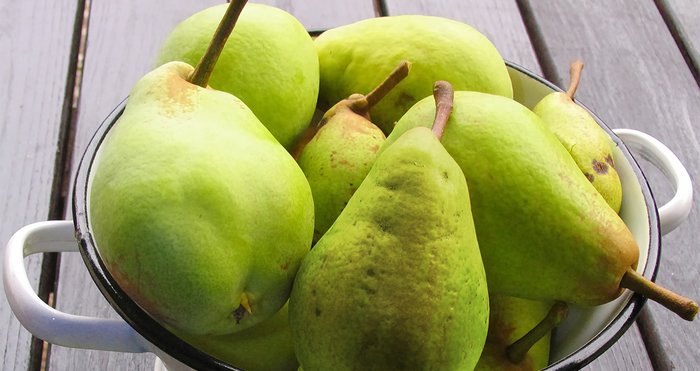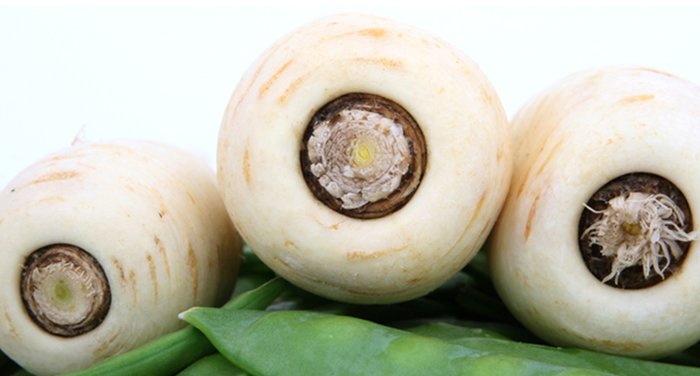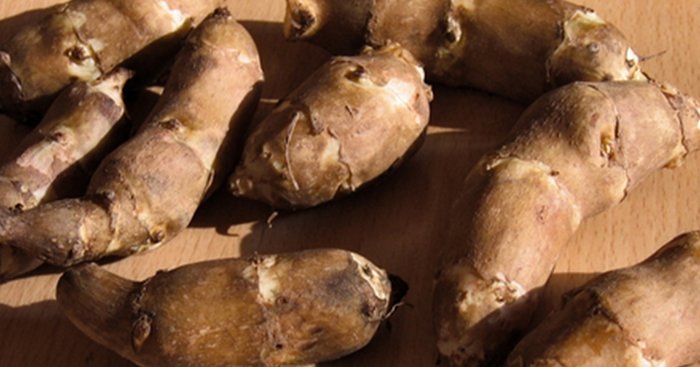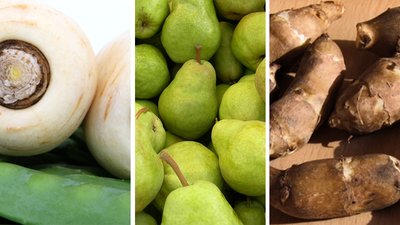Eating fruits and vegetables daily should be a priority no matter what your goals are. After all, few other foods can elevate your health and physique gains the way nutrient-dense fruits and veggies can. But why load up your grocery cart with asparagus from Peru or blueberries from who-knows-where when Mother Nature provides a new, domestic batch of nutritious and delicious options with every season change?
As sweater weather arrives, it's time for you to embrace the numerous health benefits that several in-season fruits and vegetables have to offer. With that said, these three fall standouts are the cream of the crop and worth making a regular part of your fall menu. Heck, you may even save a couple bucks each grocery trip, too.
1. Pears
No doubt you've heard the old saying, "An apple a day keeps the doctor away." But it turns out that a different fall fruit may provide greater benefits than the wholesome apple: The pear. A 2015 study from Louisiana State University discovered that people who eat pears regularly are less likely to pack on unwanted fat pounds.[1] Using nearly a decade of data from the National Health and Nutrition Examination Survey (NHANES), which involved 24,808 adult participants, researchers found that people who regularly ate pears weighed an average of 8 pounds less than those who didn't, despite the fact that overall caloric intake was about the same.
One reason pears are an excellent tool when fighting the battle of the bulge is that one medium pear contains 6 grams of fiber—almost 33 percent more than an equal portion of apples![2] Dietary fiber helps to support healthy blood sugar already in normal range; promote satiety, which can reduce cravings; and curb hunger throughout the day, ultimately helping you adhere to your diet.

Furthermore, the investigators in the aforementioned study found that despite the laudable benefits of eating more pears, only 2 percent of Americans ate a single one on any given day. That's a shame, considering that people who ate pears were also 35 percent less likely to be overweight and were found to have higher intakes of additional essential nutrients such as vitamin C, potassium, and magnesium.
Need to Know: There are two major types of pears: European and Asian pears. The former provide the bottom-heavy shape you are most likely familiar with, whereas Asian pears are often more uniform in color and shaped similarly to apples.
Bartlett pears are a supermarket stalwart, and the most popularly produced and sold pear in the United States, but other delicious varieties include Bosc, Anjou, Seckel, and the ultra-crisp Asian.
Eat More: Pears make for a perfect out-of-hand snack option, but also consider adding slices to oatmeal, yogurt, toast (try placing slices on top of almond butter), and even salads for a sweet counterpoint to the earthy-tasting vegetables.
2. Parsnips
Parsnips belong to the Apiaceae or Umbelliferae family, which the more popular carrot is a part of. Perhaps, however, Bugs Bunny should have opted for parsnips over carrots, considering the ghostly cousin provides a powerful punch of nutrients!
For starters, parsnips supply a bounty of dietary fiber—roughly 7 grams per cup. That's nearly twice as much as the same serving size of carrots (6.5 grams and 3.4 grams per cup, respectively).[2] We've already praised fiber for its role in keeping body fat in check, but it's also an overall health booster. Case in point: A study published in the Journal of Gerontology discovered that a high-fiber diet can bring about healthier aging.[3]

So, if you want to enjoy plenty of birthdays in tip-top shape, stick to a healthy diet including fiber-packed foods like parsnips. Other nutritional highlights of the root vegetable include a range of vitamins and minerals such as vitamin K, vitamin C, magnesium, potassium, and folate. These nutritional treats are also very low-calorie and can help increase your food volume without the caloric overload.
Need to Know: Smaller, thinner parsnips tend to taste sweeter and less woody. Unlike carrots, parsnips almost always taste better when they have been cooked, because of the bitter tastes they exude raw.
Eat More: Roasting, steaming, stir-frying and pureeing into soups are some of the many ways to enjoy parsnips. For a simple preparation that enhances the nutty, sweet flavor of the vegetable, try tossing a bunch of chopped parsnips with some olive oil, then spread them out on a baking sheet. Roast them in the oven at 400 degrees F until darkened and tender, which usually takes about 30 minutes.
3. Jerusalem Artichokes
These gnarled tubers of the sunflower family have nothing to do with the famous city or artichokes. Illogical names aside, Jerusalem artichokes, also called sunchokes or earth apples, can add crisp texture and bright flavor reminiscent of jicama, water chestnuts, and apple to your fall menu.
Their nutritional trump card is a high amount of the soluble fiber inulin. Inulin is a prebiotic, meaning it serves as a food source for the beneficial bacteria in your gut. A diet high in prebiotics has been shown to have a positive impact on gut and immune health.

Need to Know: The best Jerusalem artichokes are firm with a uniform light-brown hue. Steer clear of those with sprouts, wrinkled skin, or blotches, as the taste is far from stellar. Mercifully, their thin skin does not need to be peeled before eating, but you can if you so choose.
Eat More: Jerusalem artichokes can be eaten raw, so try slicing them very thinly and adding them to salads or pasta dishes for some delicious crunch. Or, cut them into larger pieces and use as a delivery system for dips.
For a healthier take on French fries, slice sunchokes into matchsticks, then toss them with olive oil, chopped fresh thyme or rosemary, salt, and pepper. Bake at 350 degrees F for about 15 minutes, or until crisp.
References
- O'Neil, C. E., Nicklas, T. A., & Fulgoni III, V. L. (2015). Fresh Pear Consumption is Associated with Better Nutrient Intake, Diet Quality, and Weight Parameters in Adults: National Health and Nutrition Examination Survey 2001-2010. Journal of Nutrition & Food Sciences, 2015.
- United States Department of Agriculture Agricultural Research Service: National Nutrient Database for Standard Reference Release 28. Accessed August 15, 2016. Retrieved from: https://ndb.nal.usda.gov/ndb/search.
- Gopinath, B., Flood, V. M., Kifley, A., Louie, J. C., & Mitchell, P. (2016). Association Between Carbohydrate Nutrition and Successful Aging Over 10 Years. The Journals of Gerontology Series A: Biological Sciences and Medical Sciences, glw091.

